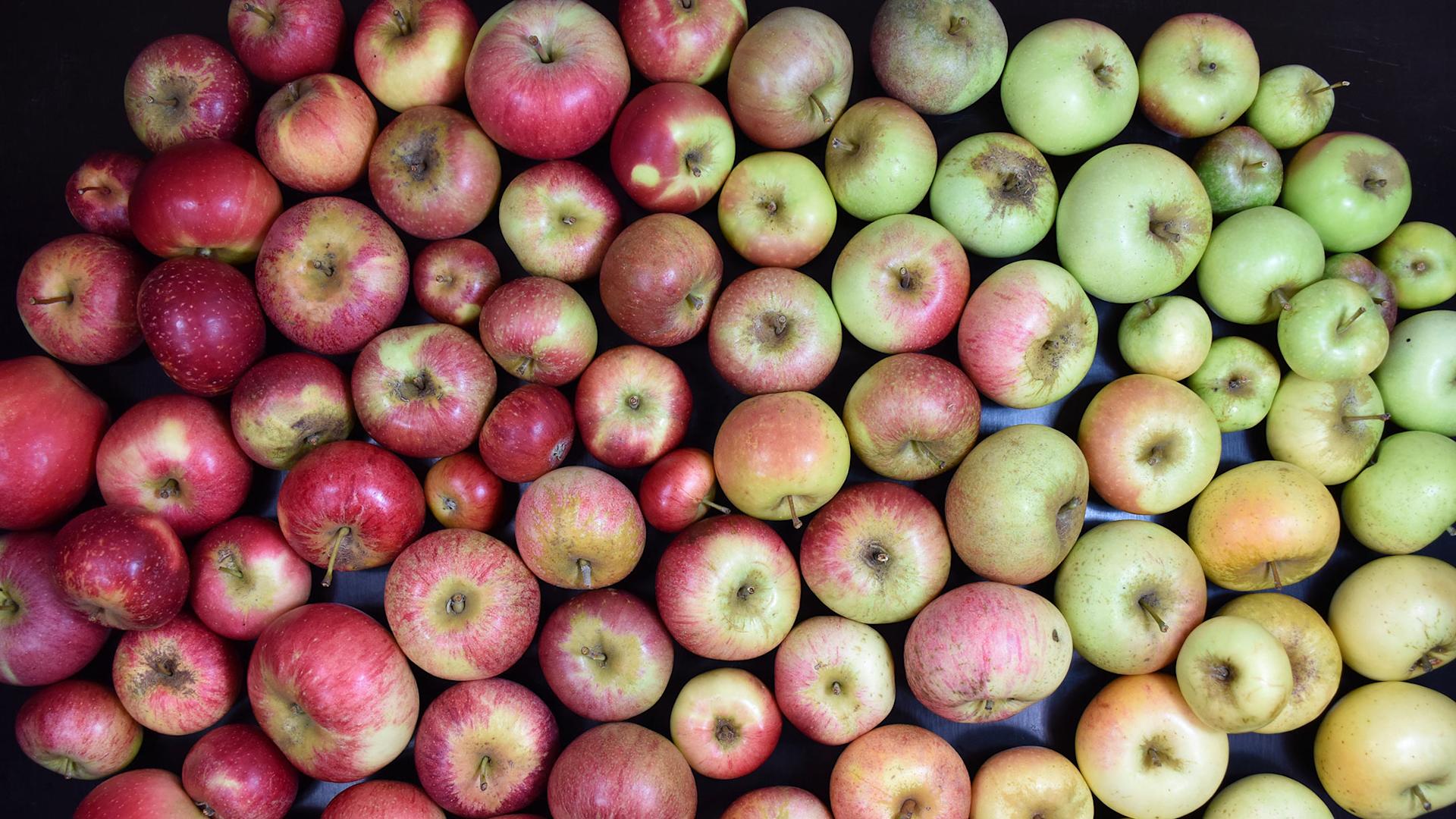
Sustainable products
How to crack nuts without a nutcracker
Got a bagful of nuts, but no nutcracker? With our hacks you won’t even need one!
navigation

Robust apple variety
There are new varieties of apples that are naturally more robust than the conventional varieties. How are these actually created and what makes them more robust?
A robust apple variety is attacked and infested less quickly and less severely by diseases such as apple scab and pests such as aphids than other varieties. The big advantage of apples with a better immune system is that they need fewer plant protection products. This means that the tractors don't have to drive through the crops as often, which reduces CO2 emissions. Both protect the environment.
Robust varieties are selectively bred. The first step is to choose the right parent varieties to cross-breed. The varieties considered are those that have proven to have a good flavour, a longer shelf life and solid disease resistance in previous breeding programs, as well as in the experience of domestic and foreign producers. "Whereas in the past, many breeding programs mainly focused on improving yield and the fruit quality, the characteristic of being robust against diseases, pests and climatic changes is now playing an increasingly important role," says Simone Bühlmann-Schütz, apple breeder at Agroscope, the Swiss Federal Centre of Excellence for Agricultural Research.
How the breeding process works: in a first step, the breeder and her team pollinate 10,000 apple blossoms by hand. The flowers are then wrapped in sacks so that bees cannot cross-pollinate them with other unwanted varieties. In autumn, the apples are subsequently harvested, with the seeds being removed and 10,000 of them sown individually. Each pip is different, because they each carry an individual combination of the genetic material of the two parent varieties and could possibly be a new top variety.
After germination, the seedlings are tested in the greenhouse for their resistance to disease-causing germs. The saplings that are susceptible to reacting negatively are continuously weeded out. After two years, around one-tenth of the saplings remain.
Four to five years later, the trees bear apples for the first time. Further test years will now be subsequently carried out, in which not only the robustness under different weather conditions and in different locations will be tested, but also the storage life and, of course, the fruit quality of the apples. This can easily take 20 years. What began with 10,000 pollinated apple blossoms has resulted, after a quarter of a century, in a new variety that meets all requirements.
"In the near future, it will virtually be impossible to breed a 100% robust apple variety, not even with genetic engineering," says Samuel Cia, research associate in fruit growing at Agroscope. This is because disease-causing germs are also constantly evolving. For this reason, the researchers are pursuing the objective of combining several resistance genes against the same disease in one variety.
You can find out more about our commitment to a wide range of sustainable products in the stories.